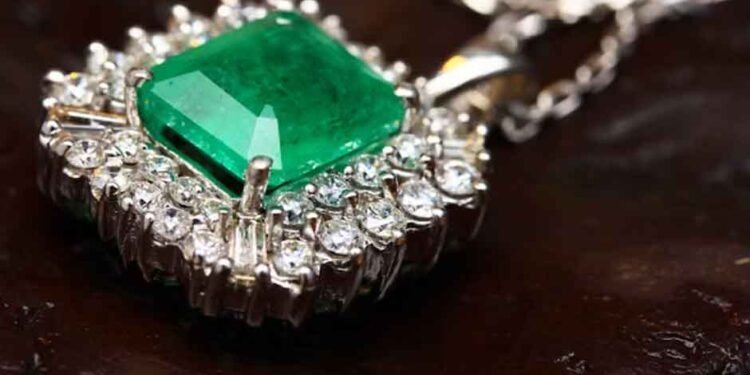Let’s be honest—we’ve all been there. You walk into a luxury store, your heart racing, ready to drop a significant amount of money on something beautiful. But here’s the million-dollar question: Will that purchase still be worth something years down the line, or are you just buying an expensive item that’ll lose half its value the moment you walk out the door?
The truth is, not all luxury items are created equal. Some are genuine investments that hold or even increase in value over time. Others? They’re just pretty things with hefty price tags. In this article, we’ll cut through the marketing hype and look at what actually makes luxury items worth your hard-earned money.
Understanding What Makes Luxury Items Investment-Worthy
The Core Principles of Value Retention
Think about it this way: What makes something valuable years after you buy it? It’s not just the logo or the price tag. Real value comes from a combination of factors that work together.
First, there’s scarcity. When something is genuinely limited in production, demand naturally drives value. Then you have brand heritage—names that have been around for generations and have proven their staying power. But here’s what many people miss: the intrinsic value of materials matters enormously. A bag made from exotic leather might be expensive, but items crafted from precious metals have a built-in value floor because the materials themselves are worth something.
Finally, market demand plays a huge role. If collectors are actively seeking certain items, you’ve got a liquid market where you can actually sell when you need to.
Why Traditional Luxury Goods Often Lose Value
Here’s the uncomfortable truth: most luxury fashion items depreciate faster than a new car. That designer handbag you bought? Unless it’s an extremely rare piece from a heritage house, it’s probably worth 30-50% less the moment you use it.
Why? Because fashion moves fast, trends change, and manufacturers keep producing new versions. The psychological trap is real—we often confuse expensive with valuable. But expensive just means it costs a lot. Valuable means it holds or grows that cost over time. There’s a massive difference.
Timepieces as Tangible Assets
What Separates Investment-Grade Watches from Fashion Pieces
Now we’re getting into interesting territory. Watches are one of the few luxury categories where certain pieces genuinely appreciate. But not all watches do this—in fact, most don’t.
The watches that hold value share specific characteristics. They come from heritage brands with decades or centuries of proven craftsmanship. They feature iconic designs that have remained desirable across generations, not trendy styles that’ll look dated in five years. Mechanical movements—the intricate inner workings—matter more than you’d think. These represent genuine craftsmanship and engineering.
Limited editions and discontinued models often see the most dramatic appreciation because supply is fixed while demand can grow. The secondary market for these pieces is active and liquid, meaning you can actually sell them when needed. For instance, if you’re interested in exploring classic designs that have demonstrated remarkable value retention over decades, you might want to browse Rolex Datejust watches at Kee Hing Hung to understand what timeless design really looks like in practice.
Authentication is critical. Always keep your original papers, boxes, and service records. These documents can significantly impact resale value. And remember, a watch sitting in a drawer won’t maintain its value—regular maintenance and proper storage are essential investments themselves.
The Golden Standard in Wearable Investments
Why Precious Metal Jewelry Stands Apart
Here’s where luxury and investment truly merge. Jewelry made from precious metals has a unique advantage: it has intrinsic value. Even if fashion changes, even if the brand loses popularity, gold is still gold, and it’s always worth something.
This dual nature makes precious metal jewelry particularly interesting. You can wear it, enjoy it, and show it off, but you’re also storing wealth in a tangible, portable form. Many cultures have understood this for centuries, passing down gold jewelry through generations—not just for sentimental reasons, but as genuine wealth preservation.
Plus, precious metal jewelry is relatively liquid. If you need to sell, there’s always a buyer for gold or platinum, even if they’re just buying it for the metal content.
Choosing Pieces That Appreciate Beyond Metal Value
Not all gold jewelry is equal, though. Some pieces will only ever be worth their melt value, while others command premiums far above the metal price.
The difference? Timeless design. Classic pieces that work with any style and any era will always find buyers. For example, a yellow gold chain bracelet with clean lines and quality craftsmanship will remain desirable regardless of fashion trends, while trendy designs might only appeal to buyers during specific periods.
Purity matters too. Look for proper hallmarks that verify the metal content. Higher purity generally means better value retention, though some alloys offer better durability for daily wear. It’s a balance.
Brand equity counts in fine jewelry just like it does in watches. Pieces from established jewelry houses often command premiums because buyers trust the quality and craftsmanship. But unlike fashion items, the metal content provides a safety net—you’ll never lose everything even if the brand premium disappears.
Direct Precious Metal Ownership for Portfolio Diversification
Comparing Wearable Gold to Investment Gold
Let’s talk about the elephant in the room. If gold has value, why not just buy pure investment gold instead of jewelry or watches?
It’s a fair question. When you buy jewelry, you’re paying for craftsmanship, design, and retail markup. These costs mean you need the piece to appreciate beyond just the gold price movement to break even. With investment-grade bullion, you’re paying much closer to the actual metal spot price, though premiums still exist.
Storage and security differ too. Bullion needs secure storage, often in a safe or vault. Jewelry you can wear, though that comes with its own risks. Liquidity-wise, bullion is typically easier and faster to sell at fair market value.
But here’s the personal factor: you can’t wear a gold bar to dinner. There’s something to be said for enjoying your assets while they potentially appreciate.
Market Dynamics in Precious Metals Trading
Understanding pricing is crucial if you’re considering precious metals as part of your wealth strategy. Global markets set baseline prices, but local factors create variations. When checking the gold bar price, you’ll notice premiums above the spot price. These cover manufacturing, distribution, and dealer margins.
Different markets have different tax structures too, which can significantly impact your actual returns. Some regions offer tax advantages for investment gold, while others tax it like any commodity. Do your homework on your local market before buying.
Making Smart Acquisition Decisions
Avoiding Common Pitfalls
The luxury market has its share of traps for unwary buyers. Buying from unauthorized dealers might save money upfront, but you risk authenticity issues that’ll devastate resale value. Always verify you’re dealing with legitimate, authorized retailers.
Don’t overpay for pure brand marketing. Some brands charge enormous premiums that you’ll never recoup. Learn to distinguish between brands with genuine heritage and craftsmanship versus those trading primarily on marketing and celebrity endorsements.
Condition and documentation matter enormously. An undocumented piece, even if authentic, will sell for significantly less than one with full papers and service history.
Building a Strategy for Value-Holding Purchases
Here’s my advice: start with pieces you’ll genuinely use and enjoy. If it turns out to be a great investment, that’s a bonus. If it just holds value, you’ve still had the pleasure of owning and using it.
Diversify across categories if you’re building a collection. Maybe a quality timepiece, some classic jewelry, and some investment-grade bullion. This spreads risk while giving you different types of enjoyment.
Always understand your exit strategy before buying. How would you sell this if you needed to? Is there an active market? Would you need to find a specialty buyer?
Education is your best investment. Research thoroughly, learn to spot quality, and understand market dynamics in your categories of interest. Work with reputable specialists who can guide you, especially for significant purchases.
Conclusion
Not every luxury item is a good investment, and not every investment needs to be a luxury item. The sweet spot is finding pieces that offer both—items that hold or grow in value while enriching your life today.
Focus on items with intrinsic value, proven heritage, and timeless design. Whether it’s a classic timepiece, well-crafted precious metal jewelry, or pure investment gold, choose pieces you understand and can afford without financial stress.
The best luxury investments are the ones you’d be happy to own even if they never appreciate. Everything else is just a bonus.
FAQs
Q: How long should I hold luxury items before selling? A: Most value-holding pieces need 5-10 years minimum to show meaningful appreciation beyond inflation. Patience is key—these aren’t short-term flips.
Q: Should I buy luxury items primarily for investment purposes? A: No. Buy luxury items you genuinely want to own and use. If you’re purely investing, traditional financial instruments typically offer better returns with more liquidity.
Q: How can I verify the authenticity of luxury items? A: Purchase from authorized dealers whenever possible, request certificates of authenticity, and consider third-party authentication services for high-value secondary market purchases.
Q: Do luxury items provide better returns than traditional investments? A: Generally no. View luxury items as portfolio diversification and tangible assets, not primary wealth-building tools. They can preserve wealth effectively but rarely outperform traditional investments.












